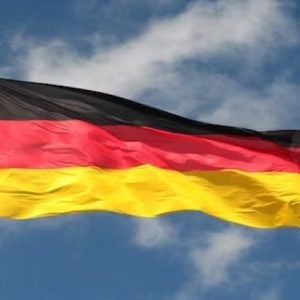
Eurelectric has published a new report, ‘Grid4Speed’, which concludes that with rising connection requests, renewables variability and electrification prospects, Europe’s distribution grids need huge investment. The study estimates the figure at €67bn/year until 2050.
There are several strategies and technologies however that can reduce the bill, says the report, by improving reliability while controlling costs. Key technologies include:
- On load tap changer transformers keep voltage stable despite fluctuations, enhancing grid flexibility;
- Dynamic line rating – adjusting grid capacity in real time based on weather, thereby reducing congestion;
- High-temperature low sag conductors, which boost power line capacity safely, even in high temperatures;
- Digitalisation, a key pre-requisite to run these technologies (with the support of accurate data from smart meters, sensors and other metering devices). Also key for their successful deployment are policy support, investment innovation and skilled workers;
Eurelectric has published on its website an interactive DSO map for a country-by-country look at energy data and grid investment needs.
Rationale
Europe is on an ambitious path of decarbonisation; meeting its targets for 2030 will require reductions in emissions of 55 % compared to 1990 levels, helped by more than 1200 new GW of renewable energy sources and at least a 35 % electrification rate of final energy use. But the delivery system for this electricity needs to be in place, and with less than six years to go, there is a need for speed, hence the title of the Eurelectric study.
Complementing Grids for Speed, it has developed an interactive map that breaks down grid investment scenarios across the EU and Norway, alongside a report on five plus one ‘Grids for Speed technologies’ that can help reduce the overall grid investment need by utilising existing capacity as effectively as possible.
Changing landscape
There is no doubt that Europe’s future is electric – electrification is at the heart of the European Green Deal. Transport, heating and even industrial processes are using more and more power in final use processes. Meanwhile, staggering amounts of renewable energy – specifically wind and solar – are being added to the energy mix every year.
While electrification ramps up at unprecedented rates, the system supporting them needs to keep pace. Since 1990 electricity demand has grown by 500 TWh to 2500 TWh. But in the next 30-year period, the demand will increase rise four times faster, increasing 2000 TWh by 2050.
Electric vehicles and their chargers, heat pumps and solar photovoltaics will lead this charge. Electric vehicles and heat pumps will each number approximately 250 million by 2050 – a roughly twenty-fold increase from today. Meanwhile there will be over 7 million public EV chargers, a near sixty-fold increase from today and a seven-fold increase in distribution-connected renewables projects to around 2300 GW.
Connecting all these electric elements to an already constrained grid will be the challenge to overcome in the next decades. Eurelectric’s president, and CEO of German utility E.ON, Leonhard Birnbaum, suggests that to put the scale into perspective, … “We will probably get to the point that up to 2030, we need to make one connection every seven seconds of a working day” which means that E.ON will need to make approximately 5.7 million connections from 2024 until 2030.
Other challenges
While electrification is underway, there are other challenges we cannot ignore. Cyber attacks in today’s more tumultuous world are increasingly likely to take our lines offline, as are extreme weather events with the intensification of climate change. At the same time, customer expectations are also changing as is the way they interact with the grid, all this while the infrastructure ages. Today, 30% of our grids are over 40 years old, which by 2050 could reach 90%. Such developments challenge the reliability of our power system.
Investments in modernisation: digitalisation, reinforcement and expansion, are therefore crucial for an electric future.
If we do not address the challenges faced today, the grid will become a serious bottleneck, putting the electric future in jeopardy. Instead of the significant growth predicted, says Eurelectric, we can expect 62 million fewer heat pumps, 73 million fewer EVs and 371 GW less solar PV to be connected in Europe in 2050 than if we take investment in the grid seriously.
We have done well investing in our grids to date, says Eurelectric. With an average of €33 bn per year invested in our distribution grids over the past years we are at a much higher level than ten years ago – connections, number of substations, expansion and digitalisation have all increased. But as electrification takes off, so too will the needed investment.
No less than a doubling of investment will be needed to keep up with a doubling of electricity consumption. That means €67 billion per year from now until 2050, to be spent on grid reinforcement (€29 bn), replacement and renewals (€18 bn), reinforcement of generation (€8 bn), grid resilience (€5 bn), smart meters (€4 bn) and automation and digitalisation (€4 bn).
The ‘Grid4Speed’ report and its interactive map may be downloaded from the Eurelectric website – https://powersummit2024.eurelectric.org/grids-for-speed/






